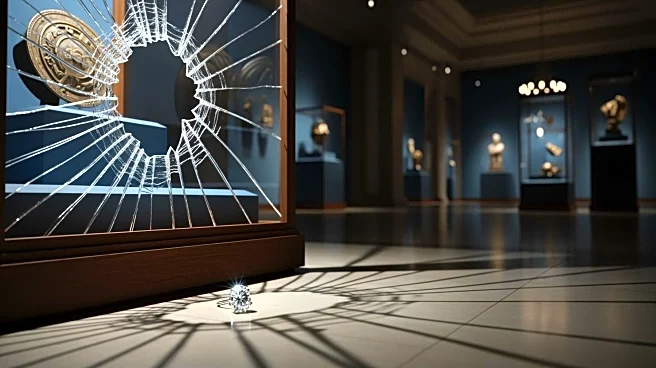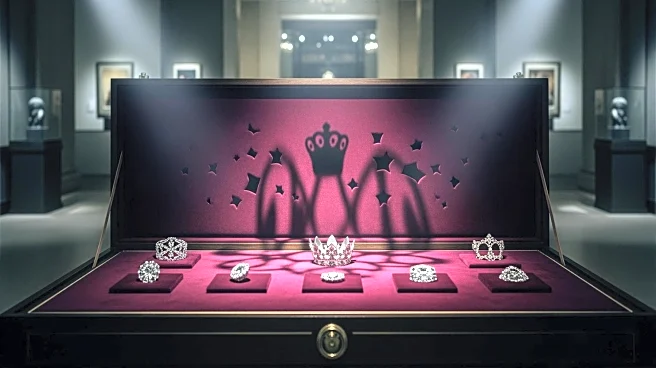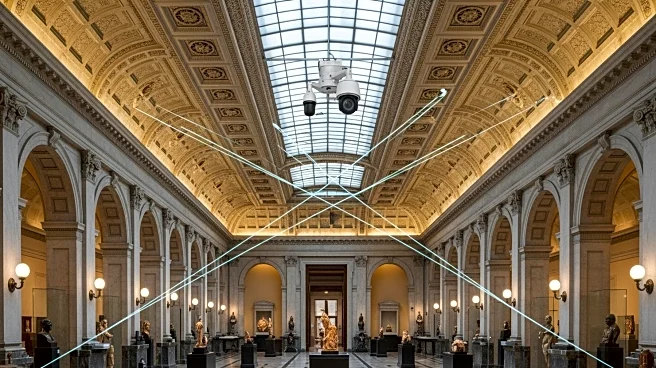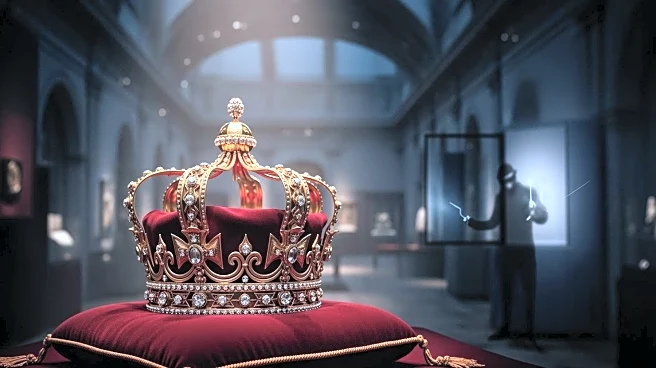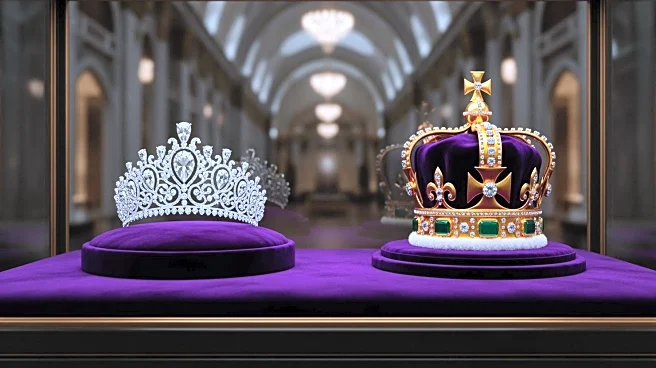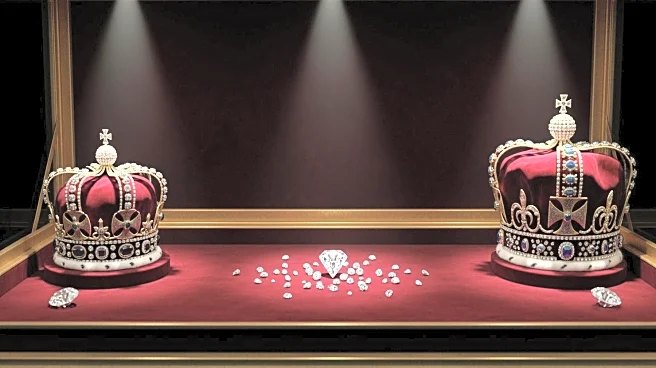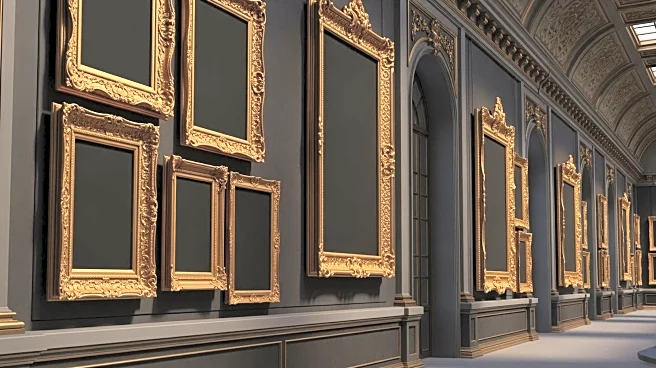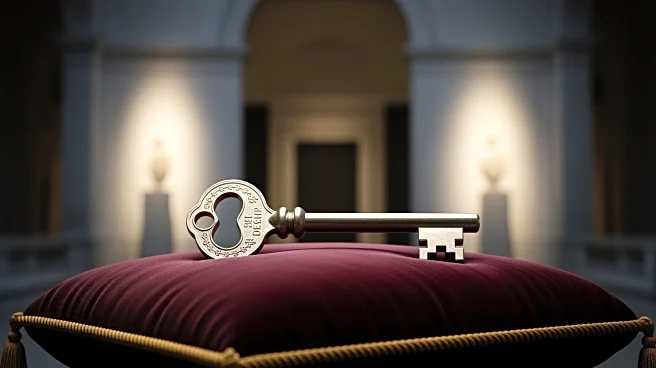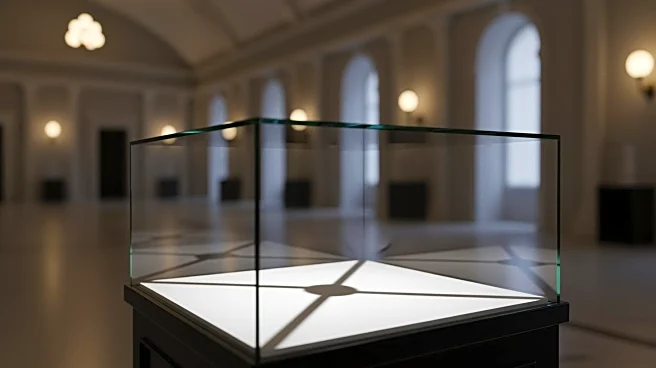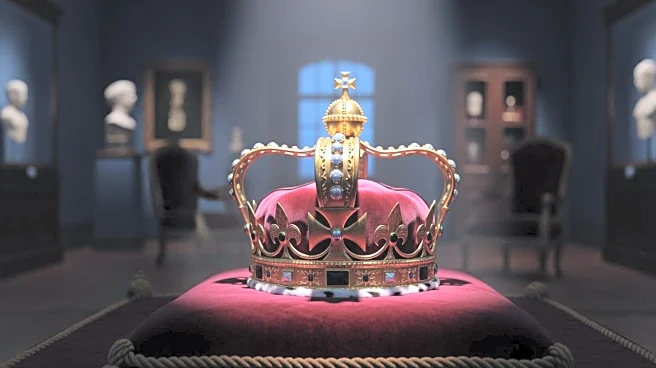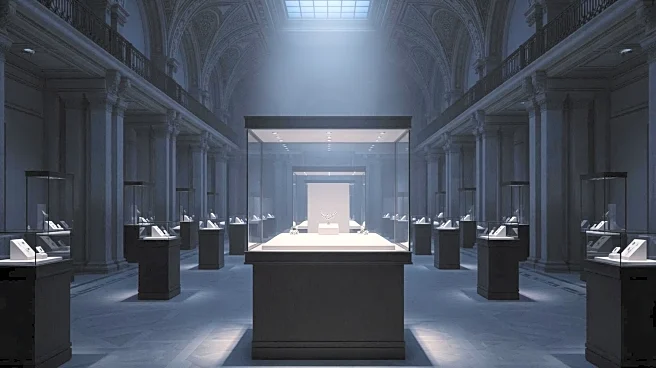What's Happening?
The Louvre Museum in Paris was the site of a daring heist where thieves stole Napoleonic-era artifacts, including a royal sapphire necklace, a royal emerald necklace, and a diadem worn by Empress Eugénie.
The thieves used a truck-mounted electric ladder to access the Apollo Gallery, where they smashed display cases and stole the valuable items. French authorities are investigating the robbery, with 60 investigators questioning witnesses and reviewing surveillance footage. The stolen items are considered France’s crown jewels, and there is concern they may be lost forever. The heist has been dubbed the 'heist of the century.'
Why It's Important?
The theft of these crown jewels represents a significant cultural loss for France, as these items are not only valuable but also hold historical significance. The heist raises concerns about the security measures in place at one of the world's most visited museums, potentially impacting tourism and public trust in cultural institutions. The stolen artifacts are irreplaceable, and their loss could affect the study and appreciation of French history and heritage. The incident may prompt museums worldwide to reassess their security protocols to prevent similar occurrences.
What's Next?
French authorities are actively searching for the thieves, with investigators reviewing forensic evidence and surveillance footage. The museum remains closed as the investigation continues, and there is a possibility of increased security measures being implemented at the Louvre and other museums. The cultural community is likely to call for international cooperation to recover the stolen items, and there may be discussions on improving security standards for displaying valuable artifacts.
Beyond the Headlines
The heist highlights ethical and legal challenges in protecting cultural heritage. It raises questions about the balance between accessibility and security in museums, and the potential for black-market sales of stolen artifacts. The incident could lead to long-term shifts in how museums approach the display and protection of valuable items, possibly influencing global policies on cultural preservation.
